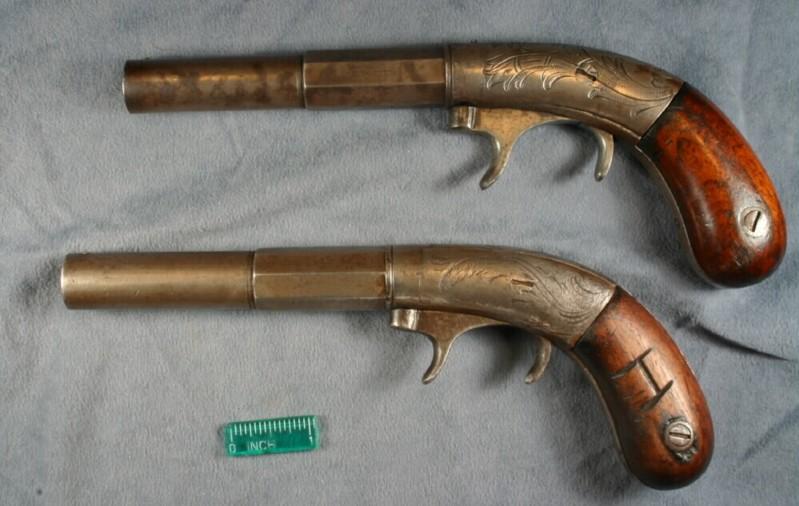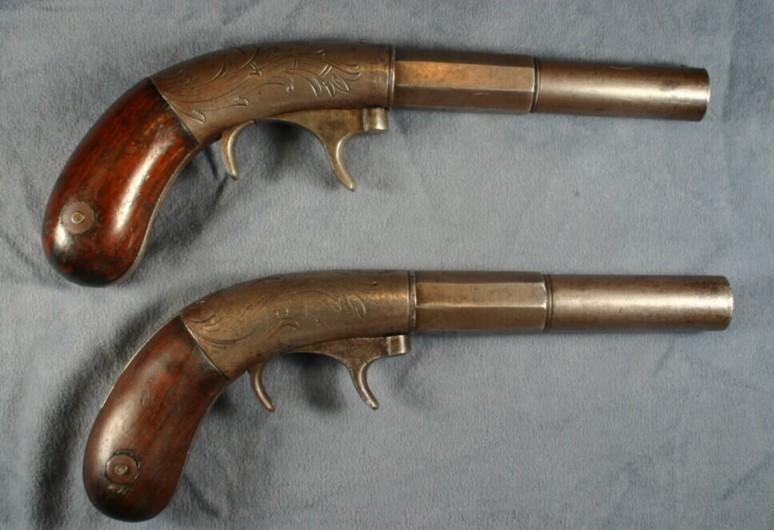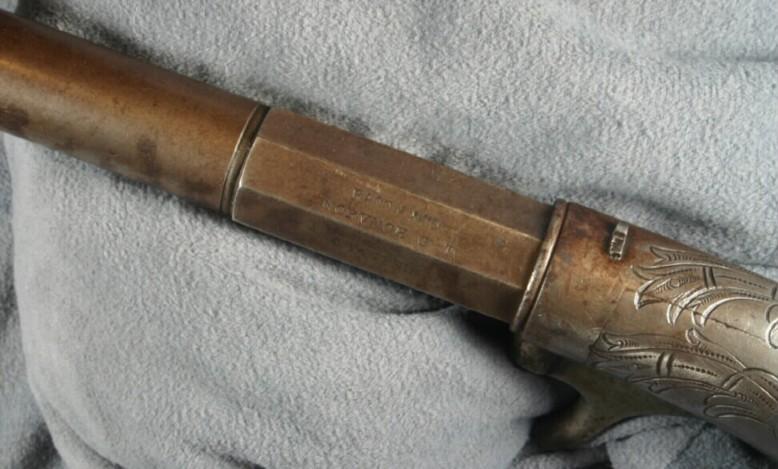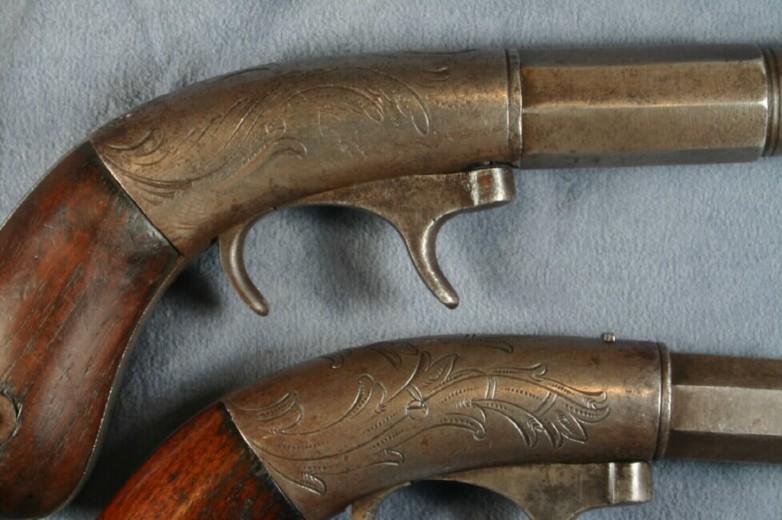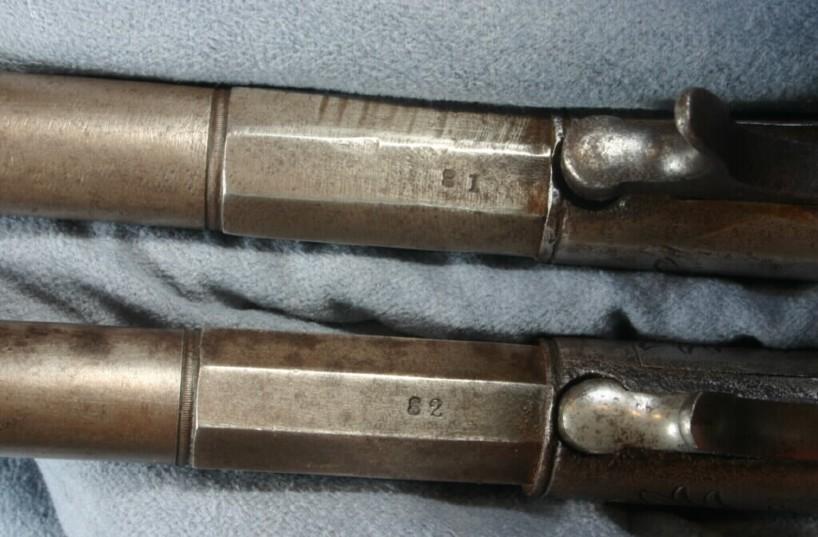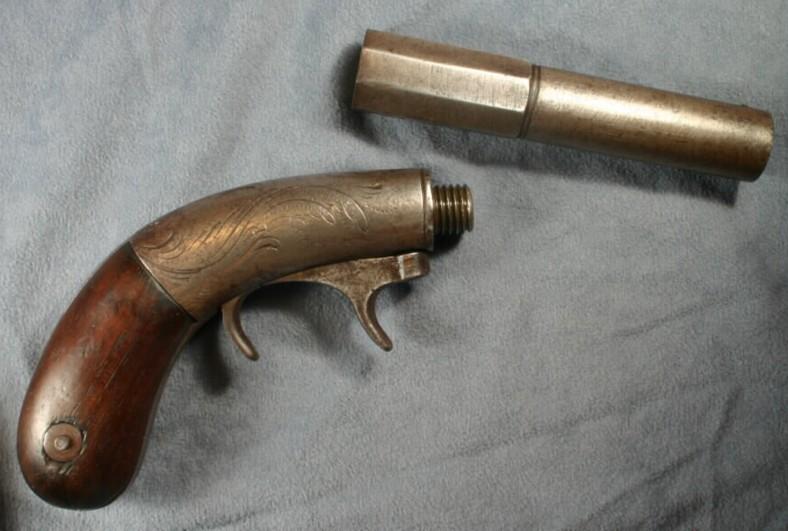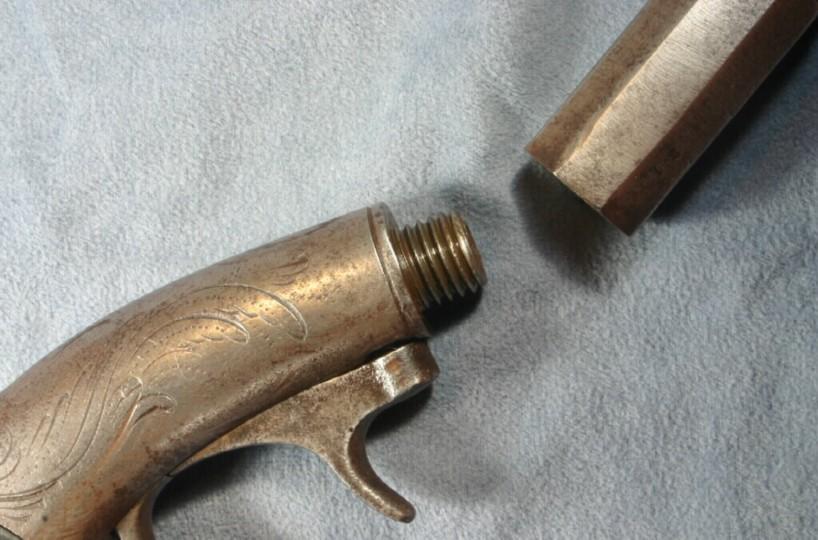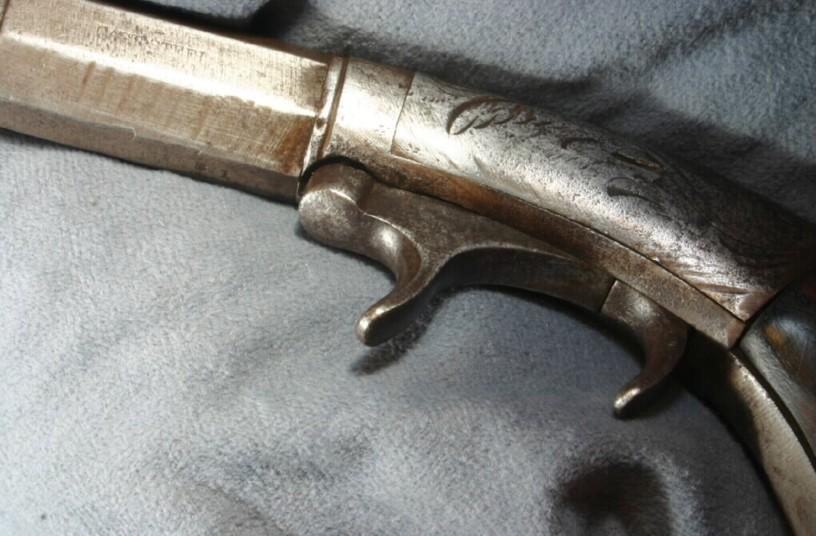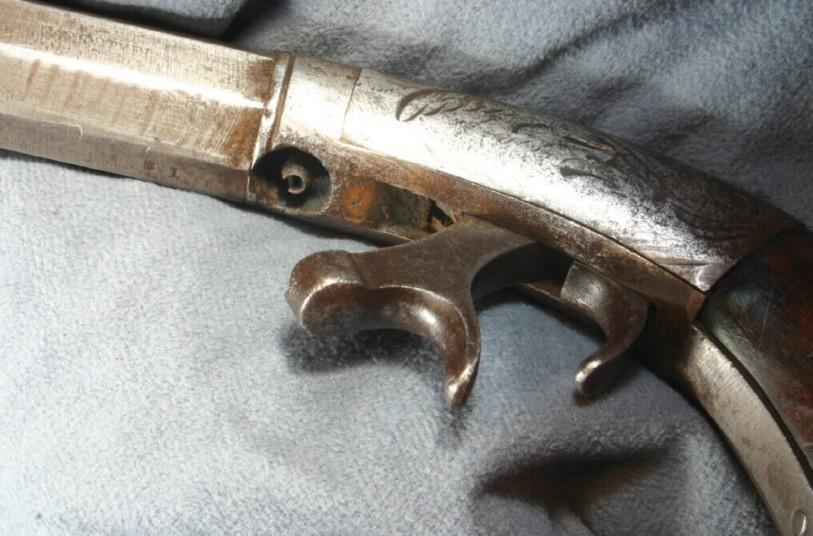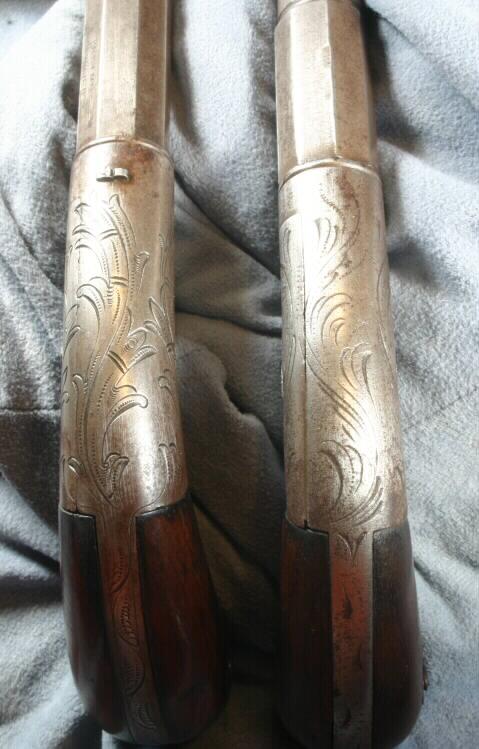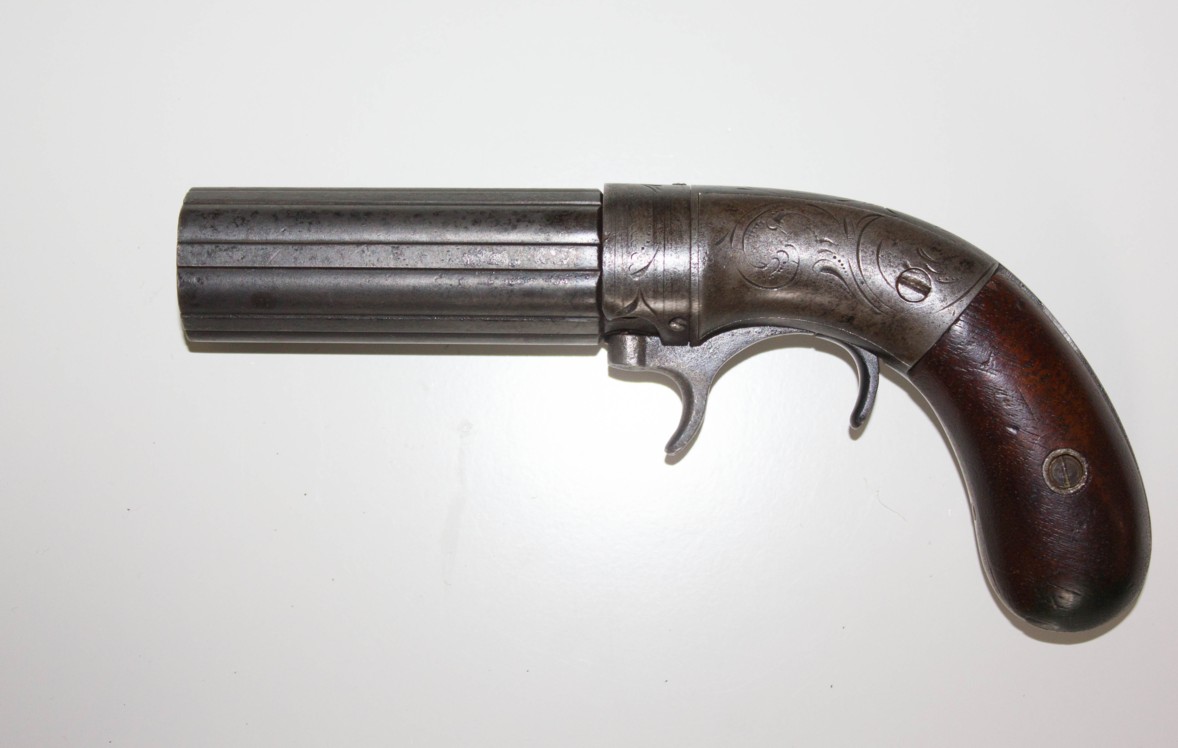
Bacon & C°
Bacon MFG C° (1858/67)
Very rare under hammer Bacon pepperbox.
This firm signed with its name or: B.J. Hart & Bro, Tomes Melvain & C°, Union
Arms & C° or Western Arms C°.

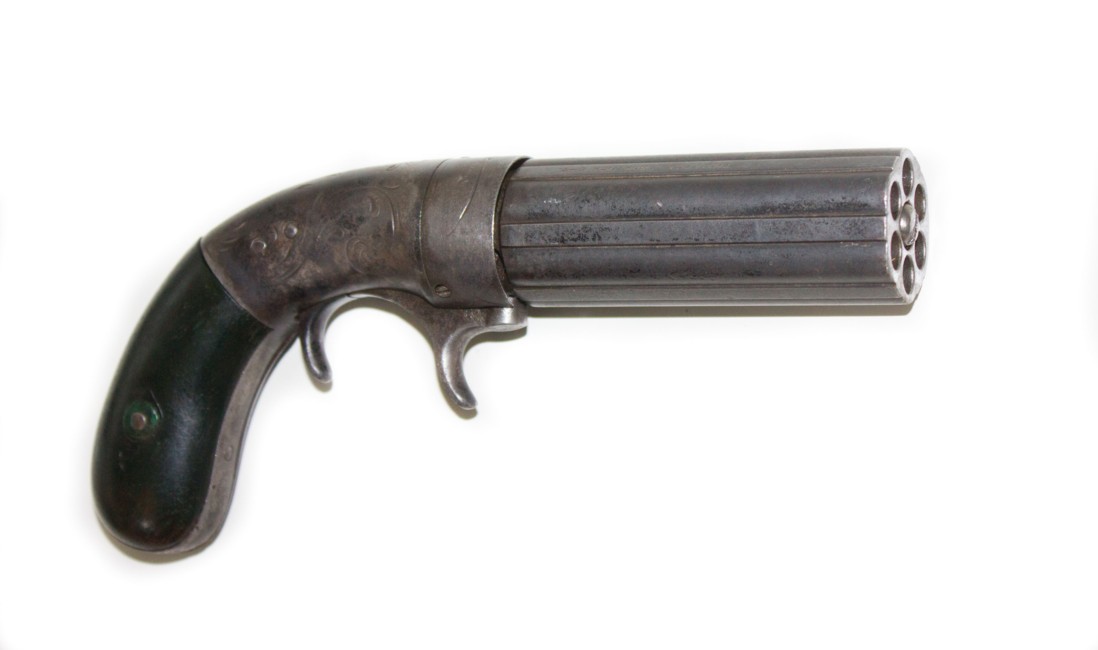
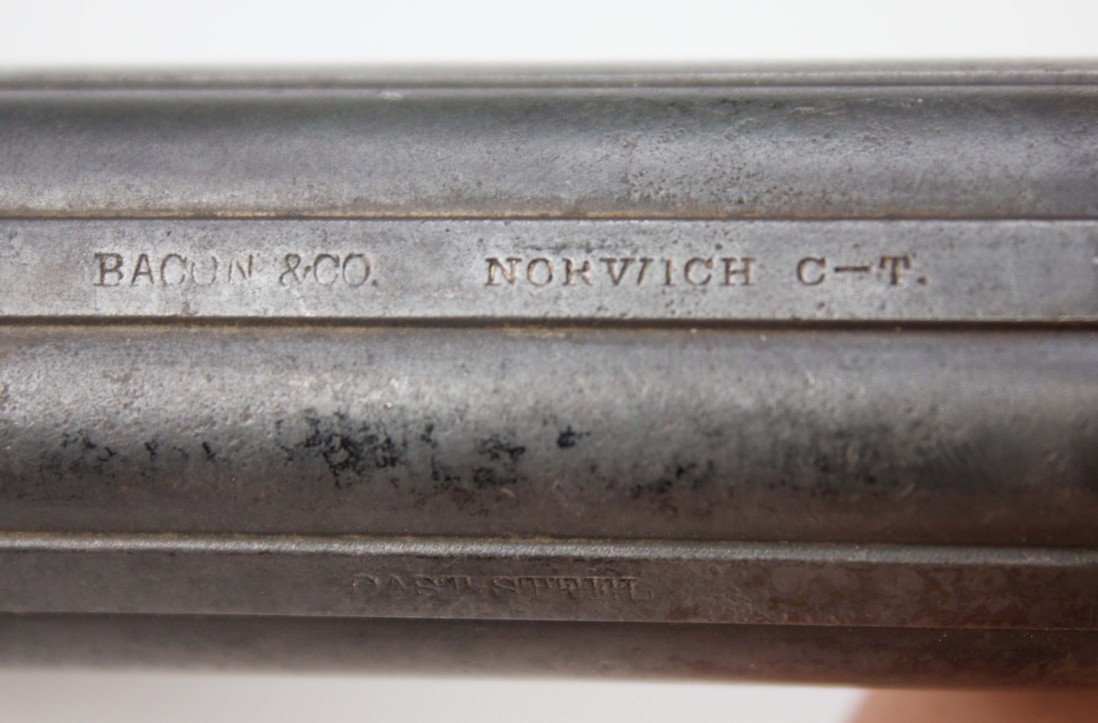
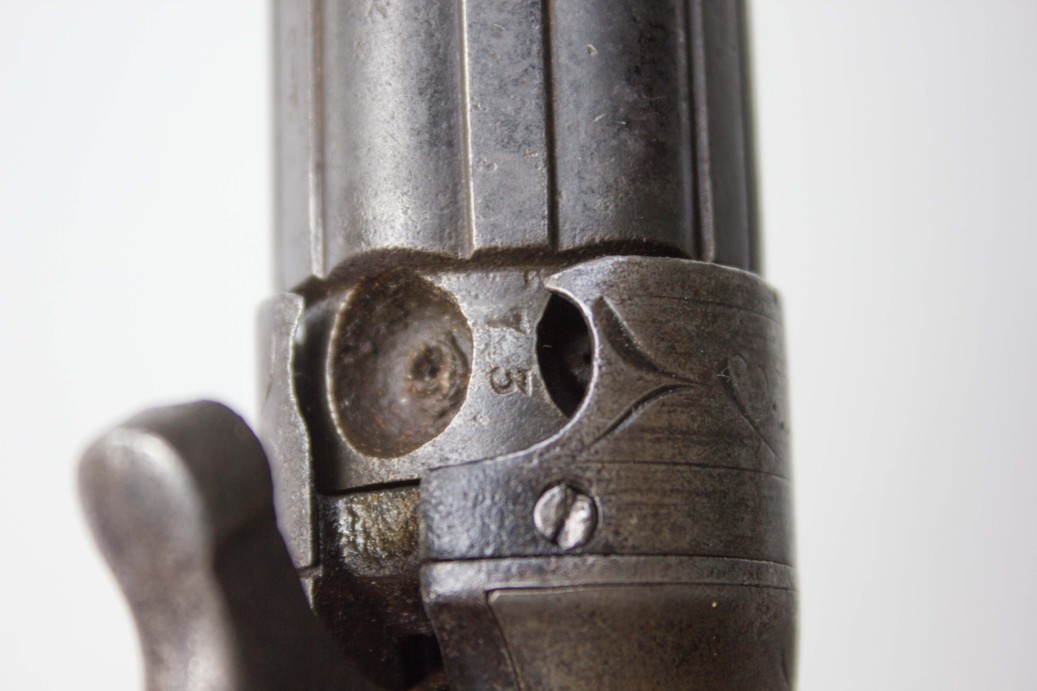
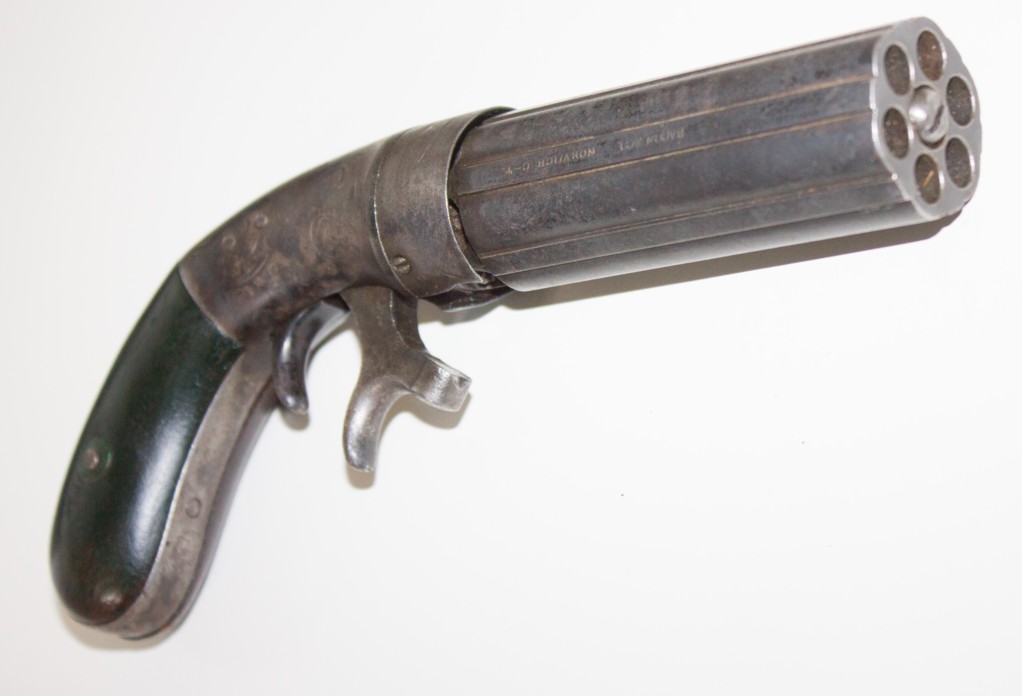
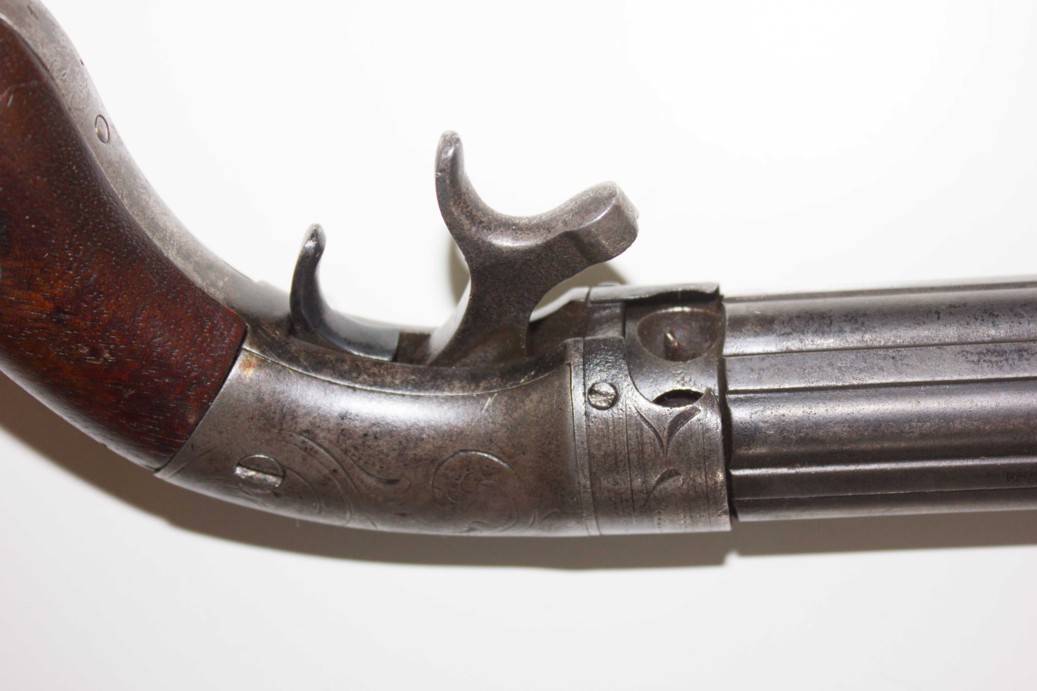
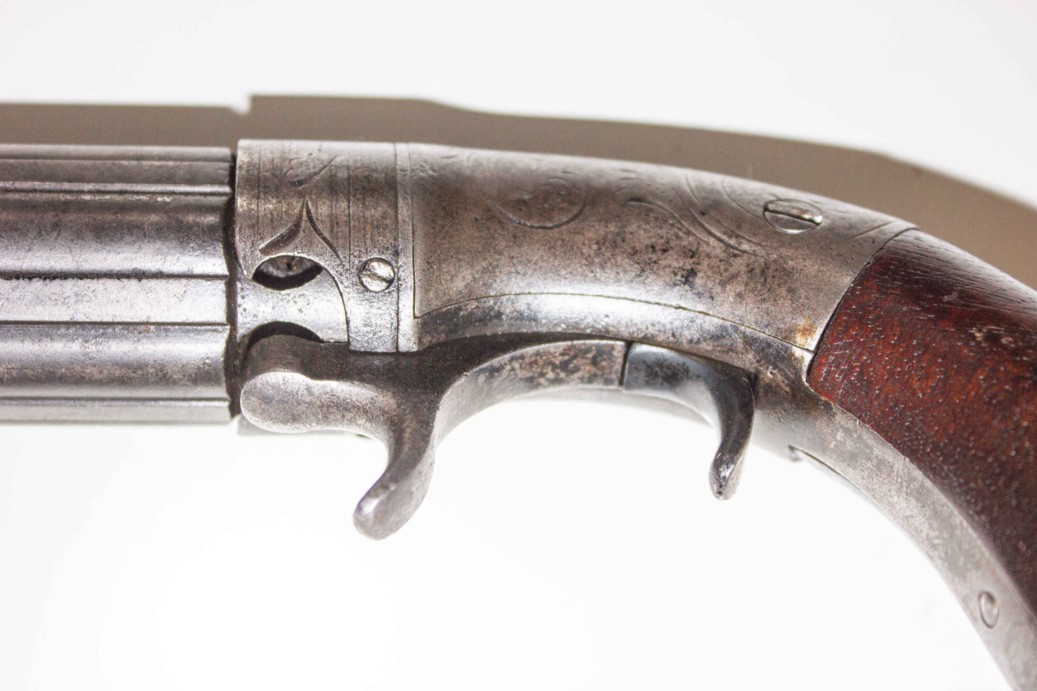
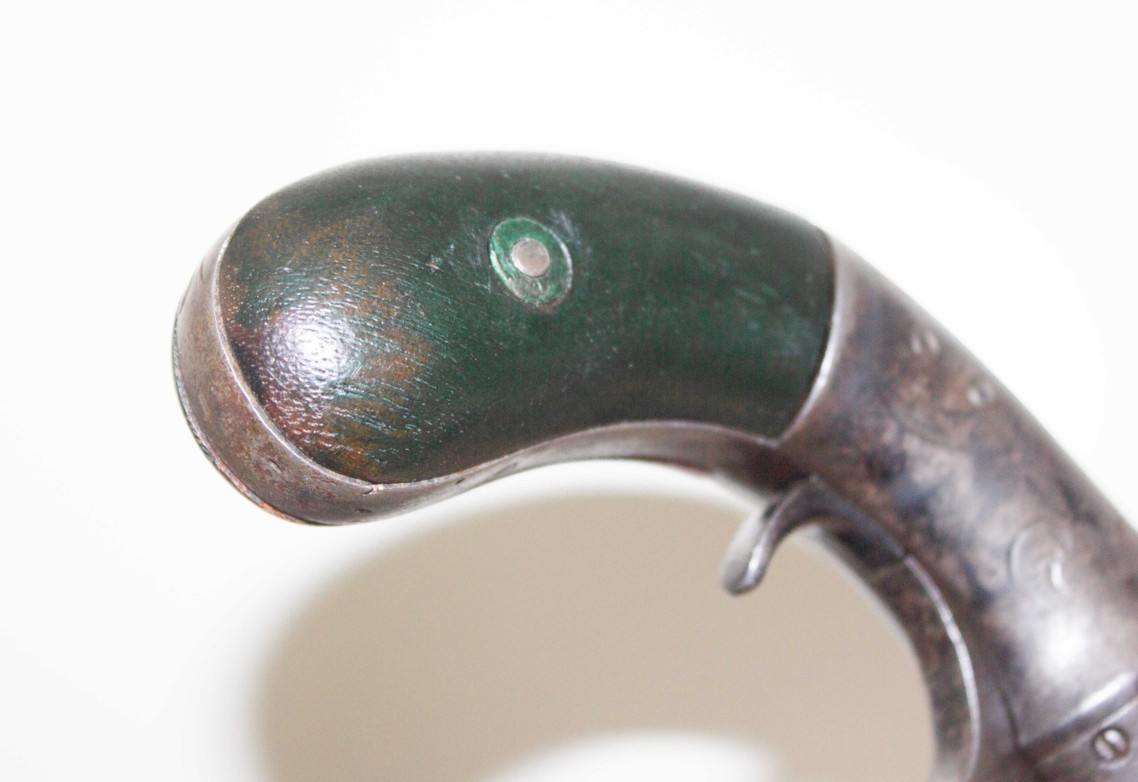

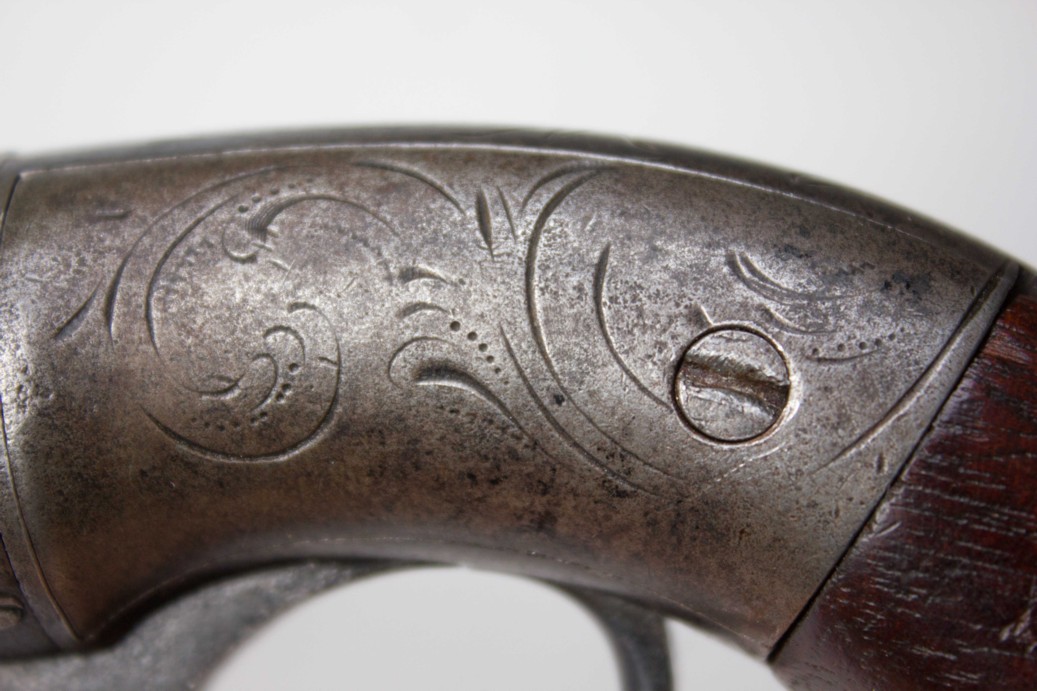
Bacon 1865
Joël H.
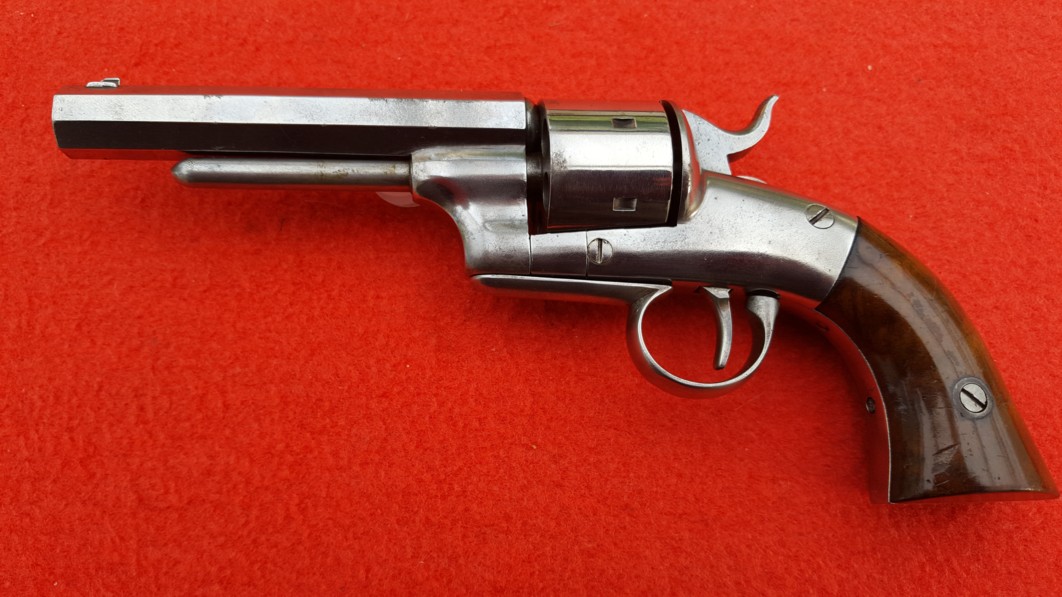

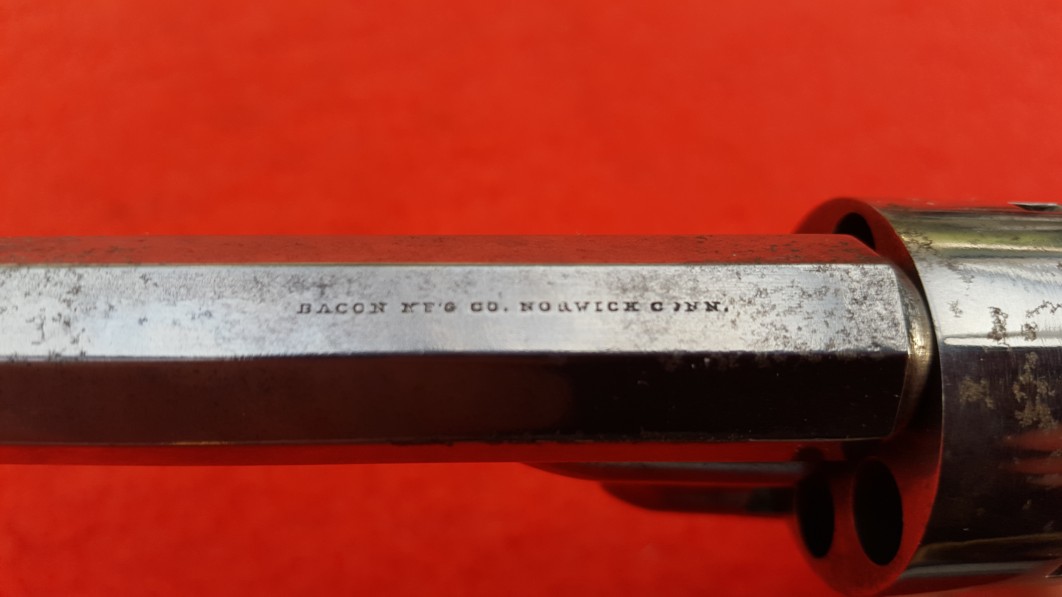

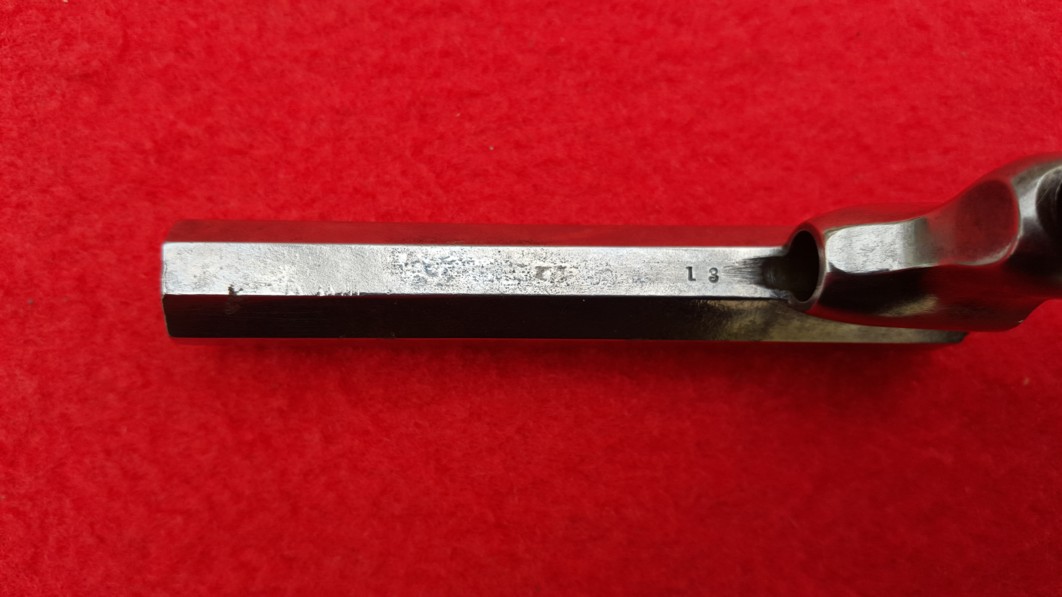
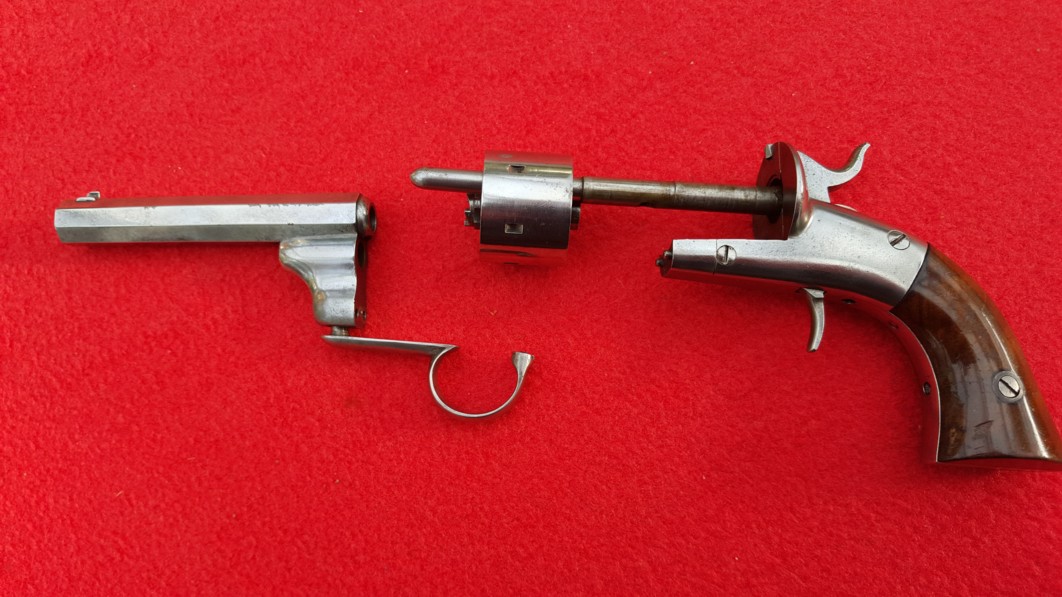
Bacon
In the case
Cased Bacon pocket revolver, second model
Around 1400 were made with Bacon markings and approx. 1900 having other markings.
This is a second variation (fluted cylinder) in excellent shape.
4 inch barrel and serial 1165.
The case is original and has the original lining.
Contains a pewter powderflask, a correct bulletmold, nipplewrench and an Eley capbox.
Cased Bacons are pretty rare.
On the right of case (2nd series of pictures)
Bacon first type pocket model revolver in cal 31 with lots of blue. Less then 1000 made; this is the only one that has a cylinderscene and it is present for 100 %. 4 inch barrel. Serial 477. Cylinder and frame are medium grey to brown with hints of blue.
On the left of case (3rd series of pictures)
Factory engraved second variation Bacon pocket revolver in cal 31. The second variation has a fluted cylinder as where the first one is rounded.
Approx 3300 were made of which 1400 had a Bacon address.
4 inch barrel, serial 558.
Photos Littlegun
A droite de la boite (2ième série de photos)
A gauche de la boite (3ième série de photo)
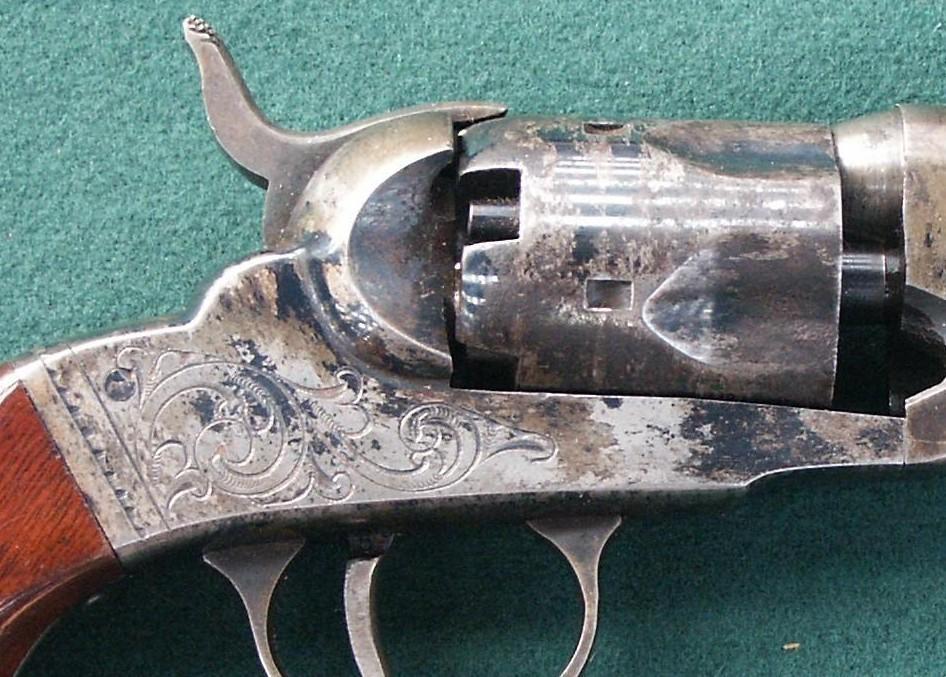
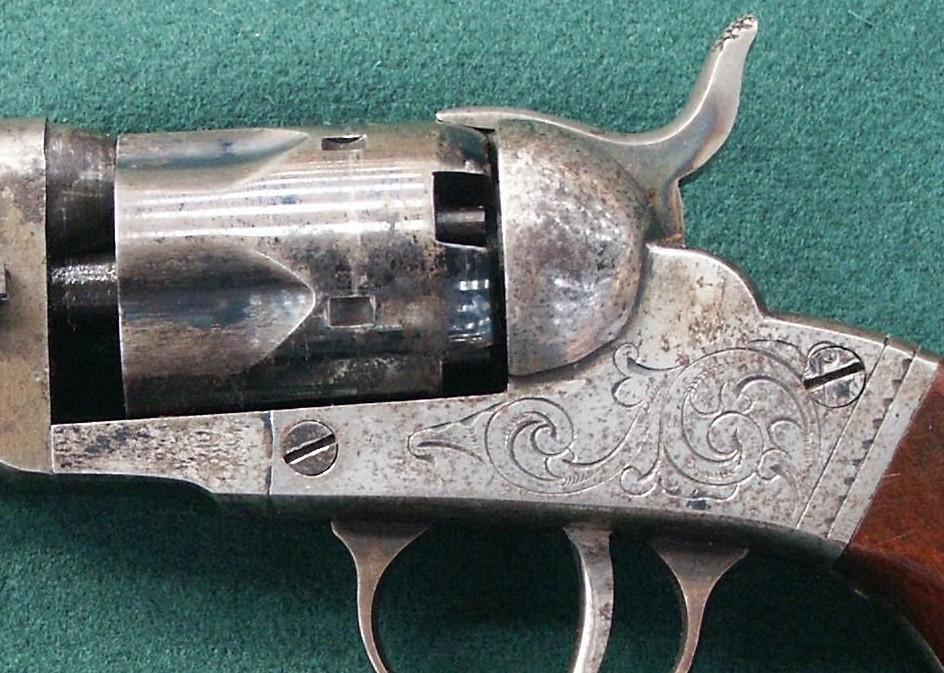
Thomas Bacon
Thomas Bacon began his career in gun making by supplying parts to Ethan Allen and around 1850, prior to a brief association with Manhattan firearms, he founded Bacon & Co., which produced relatively small numbers of various single shot and pepperbox percussion pistols in the mid-1850s.
After working as plant manager for Manhattan Firearms, he subsequently founded Bacon Manufacturing Co.
Bacon Manufacturing made revolvers nearly identical to the Manhattan Firearms models. Thomas Bacon ultimately left Bacon Manufacturing and founded a third eponymous firm, the Bacon Arms company, which manufactured cartridge weapons.
Roger P.
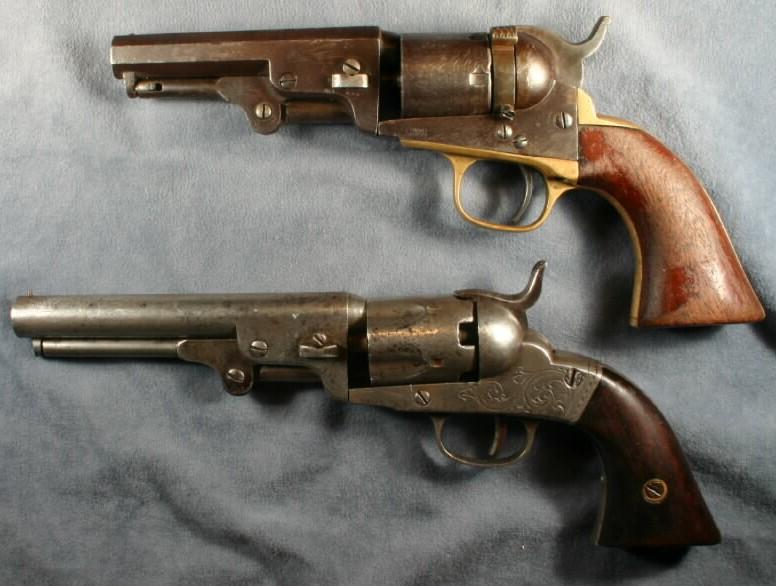
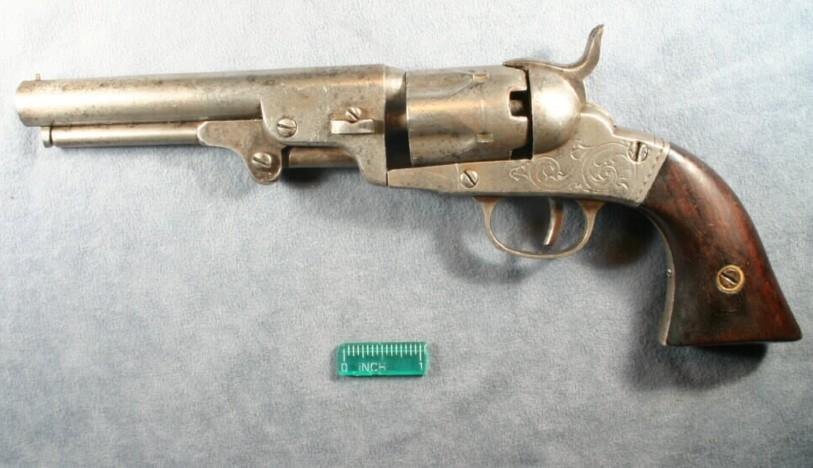
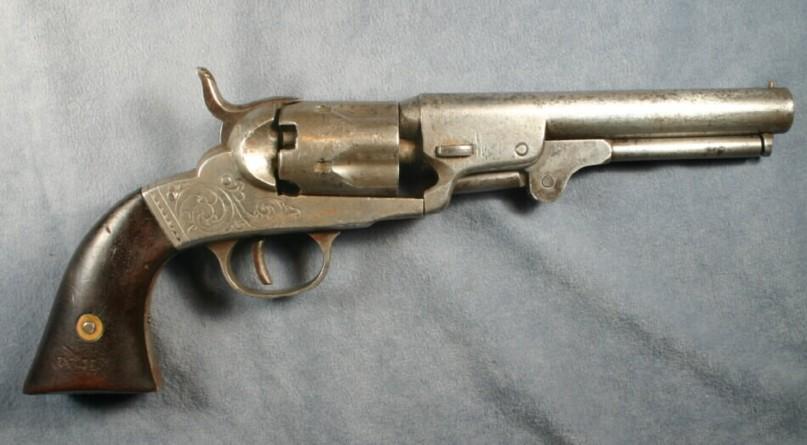
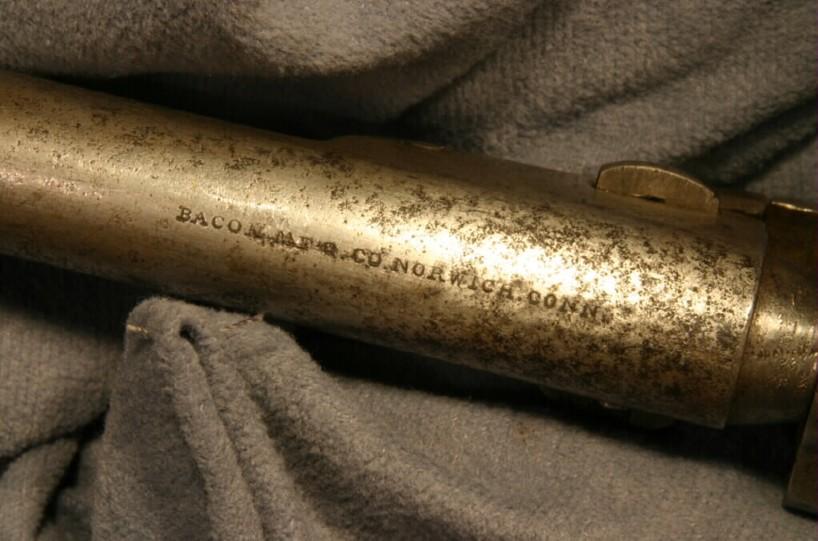
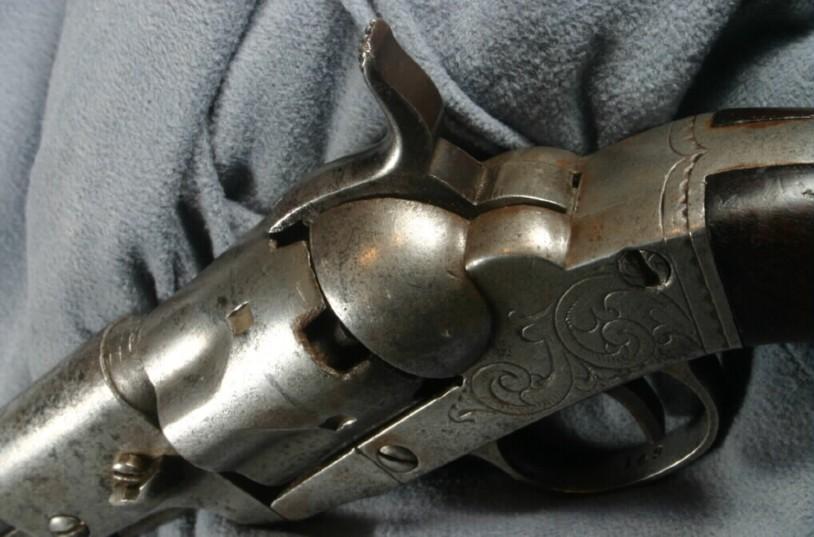
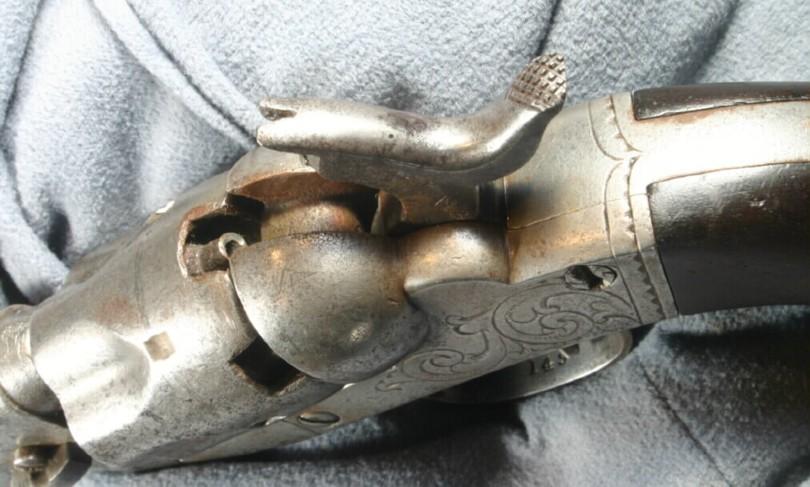
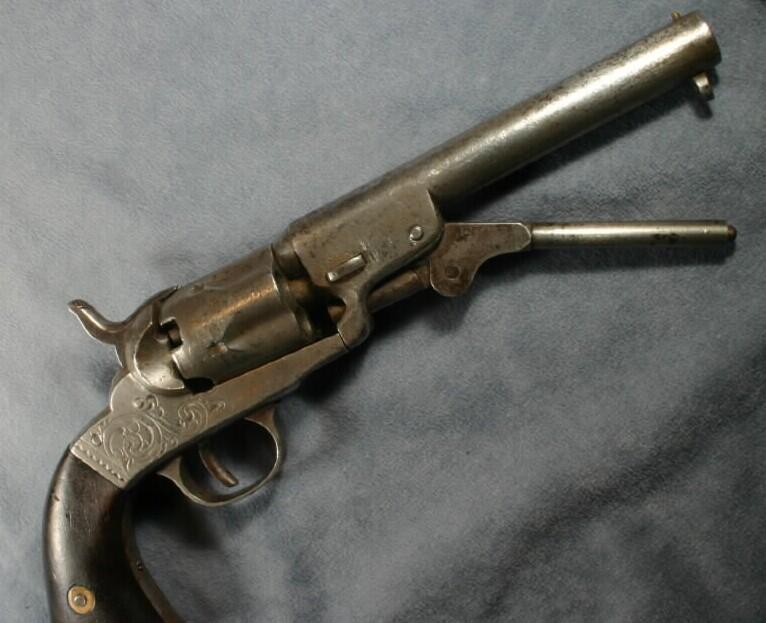
Bacon underhammer pistols
Circa 1855: The underhammer design was introduced early in the percussion era by Ethan Allen and others. The smooth upper profile made underhammers easy pistols for concealment and consequently these became known as boot leg or bootlegger pistols.
Bacon & Co. produced only about a total of 500 underhammer pistols.
The octagonal sections allow for the barrels to be unscrewed for loading.
Although these two pistols are very similar, they are not identical. Their engravings differ and only one came equipped with a rear sight. However, they have consecutive serial numbers, making it temping to speculate that they have been together since before the time of the American civil war.
Roger P.
